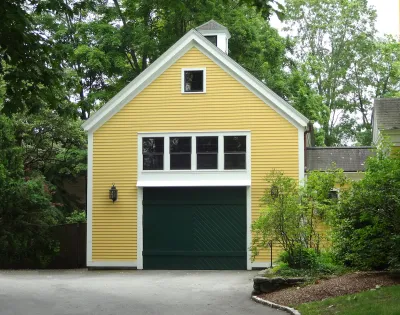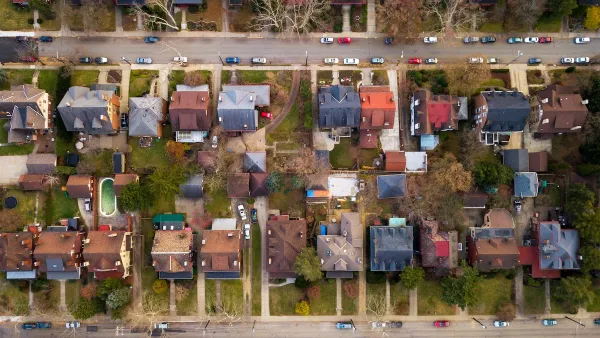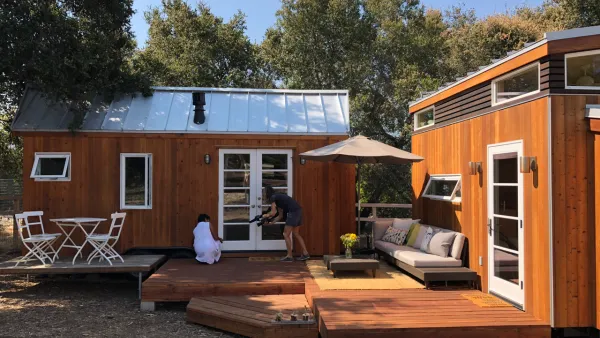One writer argues that backyard homes can hinder community-building and relegate some residents to the shadows.

In an op-ed in Next City, Travis Beck warns against the pitfalls of accessory dwelling units (ADUs), an increasingly popular way for cities to make way for ‘gentle’ density increases and more housing units.
Beck, who lived in a neighborhood rife with ADUs in Santa Cruz, California, argues that “Implemented at scale, … ADUs are a bad urban design solution. They disrupt the neighborhoods they are intended to preserve and can limit, rather than create, social opportunity.”
While ADUs can be relatively inexpensive and fast to build and can provide new housing in existing neighborhoods, Beck argues that “tucking more people into the backyards and former garages of a single-family neighborhood preserves the dream of homeownership for only a segment of the population, cuts off access to neighborhood life for the rest — and puts everyone in an uncomfortable arrangement.” For Beck, the nature of ADUs created “two parallel neighborhoods,” relegating some residents to the backyards of other homes without street-facing yards or porches, creating “limited opportunities for neighborly relationship building.” Beck does not address the possibility that the backyard tenants are elderly family members who may require care from adult children or young adult children who may not be able to otherwise afford housing in the same city or neighborhood.
Beck argues that “There are better ways to add density while building opportunity and the community life of neighborhoods,” recommending instead zoning changes that encourage other mid-density housing such as fourplexes or townhomes. For Beck, street-facing frontage seems to be the key to creating community, but how many residents of single-family neighborhoods don’t actually ever interact with their neighbors, regardless of the size of their porches or their closeness to the street? It should be noted that ADUs don't always mean backyard cottages. In some cases, ADUs are converted basements or garages located on the same plane, or even in front of, the ‘main’ house.
For Beck, good urban design means permitting multifamily housing and building more in denser, walkable parts of town. “Rather than pursue the seemingly easy option of permitting more ADUs, they should use the familiar built forms of denser neighborhoods to create housing and community for more of the population at the same time.”
FULL STORY: ADUs Can Help Address The Lack Of Housing. But They’re Bad Urban Design.

Analysis: Cybertruck Fatality Rate Far Exceeds That of Ford Pinto
The Tesla Cybertruck was recalled seven times last year.

National Parks Layoffs Will Cause Communities to Lose Billions
Thousands of essential park workers were laid off this week, just before the busy spring break season.

Retro-silient?: America’s First “Eco-burb,” The Woodlands Turns 50
A master-planned community north of Houston offers lessons on green infrastructure and resilient design, but falls short of its founder’s lofty affordability and walkability goals.

Test News Post 1
This is a summary

Analysis: Cybertruck Fatality Rate Far Exceeds That of Ford Pinto
The Tesla Cybertruck was recalled seven times last year.

Test News Headline 46
Test for the image on the front page.
Urban Design for Planners 1: Software Tools
This six-course series explores essential urban design concepts using open source software and equips planners with the tools they need to participate fully in the urban design process.
Planning for Universal Design
Learn the tools for implementing Universal Design in planning regulations.
EMC Planning Group, Inc.
Planetizen
Planetizen
Mpact (formerly Rail~Volution)
Great Falls Development Authority, Inc.
HUDs Office of Policy Development and Research
NYU Wagner Graduate School of Public Service




























